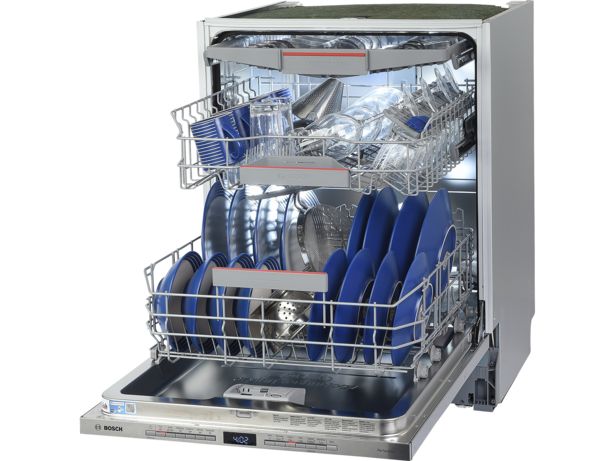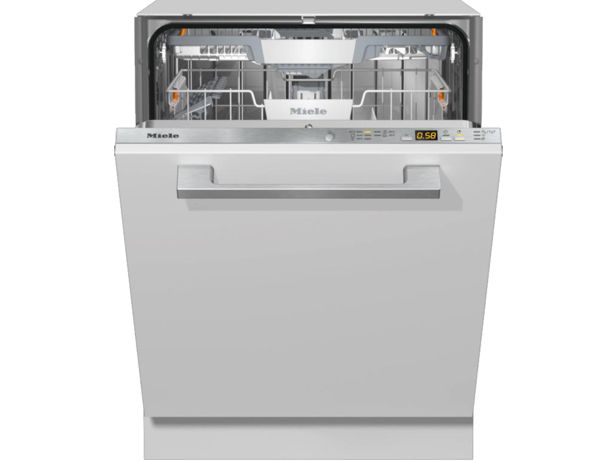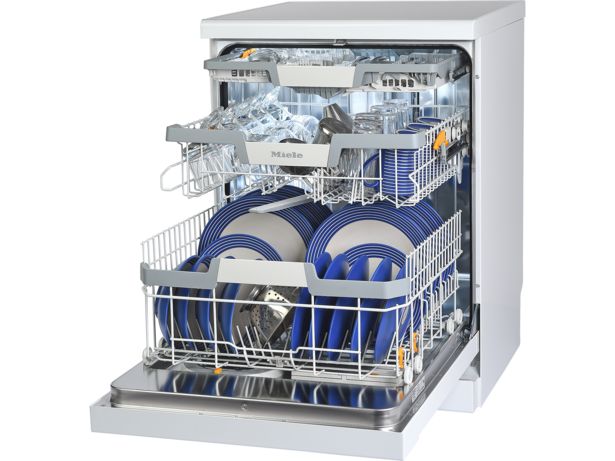How to load your dishwasher

The way you load your dishwasher can make a big difference to how efficiently it cleans your dishes, especially bigger items and those covered in tough-to-shift grime.
To make sure you end up with a perfectly clean load of dishes every time, take a look at our dishwasher loading guide video.
Also, check out our table below to find out which of your most-washed items are dishwasher safe.
See our shortlist of the best dishwashers.
Video: how to load your dishwasher
Our top dishwasher loading tips
1. Scrape plates, no need to rinse
Knocking off lumps of leftover food before loading the dishwasher will give it best chance of getting everything clean. But most dishwasher programs will pre-rinse your dishes, so you don’t need to run them under the tap – it's a waste of water.
2. Face the middle
The dirty side of every item should face the centre of the dishwasher rack.
The jet spray from the dishwasher arms comes out like a garden sprinkler, so make sure it won’t be blocked, or facing away.

3. Don't overload your dishwasher
Leave spaces between dishes and cutlery for the water and detergent to spread around the dishwasher. Sticking to the spaces provided in the dish racks and cutlery baskets is a good idea.
Overloading your dishwasher will make it more difficult for it to get everything clean.
4. Mix up plates and bowls
Leaving spaces between dishes and cutlery allows the water and detergent to spread around.
You could even try alternating between larger and smaller plates next to each other to help with this.

5. Bowls always face down
It sounds obvious, but never place bowls upright. Water will just collect in them, meaning they won't clean properly.
6. Large items at the back and sides
Load large items, such as baking trays or turkey platters, at the side or back. This will make sure they don't get in the way of the flow of water and detergent, preventing other dishes getting clean.
7. Use adjustable racks for large items
Most dishwashers now have adjustable top racks. This is really useful for fitting in large items or long-stemmed wine glasses, but it isn’t always obvious that you have one at a glance.
To check if your dishwasher has an upper rack that can be lowered or raised, look out for a lever mechanism on the sides (as in the image below).
Some also use a runner system that requires the basket to be removed and the runners to be adjusted.

8. Roasting trays on the bottom rack
The best way of cleaning away baked-on food from roasting trays is to load them in the lower rack – this is where the water pressure and temperature is highest. Some dishwashers have a separate spray-head for heavy-duty jobs like this.
9. Cups and glasses up top
If you drink out of it, it should go on the top, facing down. Put glasses along the side supports if possible, as the water jet isn't so powerful here. Cups and mugs can go in the middle.
10. Safeguard your plastics
Plastic items also go on the top rack. The temperature is lower here, so there's less chance of them warping or becoming misshapen in the heat.
11. The key to loading cutlery
The reason your cutlery doesn't always get clean could be because like-for-like items are sitting too close together, meaning there's no space for the water.
This issue, known as nesting, can happen when spoons lean into each other. To solve this, place some upright and some facing downwards, so that water can rinse over all surfaces.
The exception to this rule are knives. It's safer to just load them pointy-side down.

Can I add items to the dishwasher after the program has started?
It depends. A dishwasher cleaning cycle has various stages, and any item that is not in the machine for the entire program may not be cleaned as effectively.
However, most dishwashers tend to run a pre-wash stage first, so if the item you want to add in isn't absolutely caked in food and grime, it shouldn't be an issue to add it to the wash after 10 minutes or so.
This works a bit like the 'add wash' function on some washing machines, enabling you to drop in a missed sock after a washing program has already started.
Just bear in mind that there might be water sloshing around and steam being produced when the dishwasher door is opened, so do take care when adding additional items.
What's the dishwasher safe symbol?

There's no standardised symbol to say whether a piece of crockery, glassware or plastic is dishwasher safe. But two of the most commonly used symbols are pictured above.
Many items are dishwasher safe in the top rack only. This is because the top rack cleans more gently, and at a lower water pressure than the bottom rack, so more delicate items will be safer there.
If an item is dishwasher safe in the top rack only, it should state it on the sticker at the bottom, or on the box it came in.
If you're not sure, it's better to be safe than sorry and wash it up by hand.
What is dishwasher safe and can go in?
Here's a list of commonly searched-for items and whether the manufacturer says it is dishwasher safe – in alphabetical order.
| Item | Dishwasher safe or not? |
| Aeropress | Dishwasher safe on the top shelf |
| Avent bottles | Dishwasher safe on the top shelf |
| Baking trays | Not dishwasher safe (unless it's stainless steel) |
| Bamboo cups | Dishwasher safe |
| Bobbles bottles and cap | Dishwasher safe |
| Bodum double wall glasses | Dishwasher safe |
| Brita water jug and filter | Not dishwasher safe |



